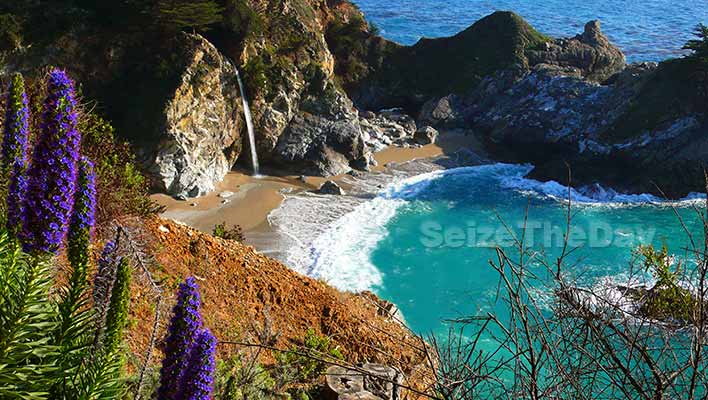
http://farm4.static.flickr.com/3297/3539608557_f3ca9db28f.jpg
Big Sur is mostly known for its gorgeous views, amazing hikes, great camping, and natural hot springs with beautiful resorts; where many people escape from their busy lives for a rest and relax vacation. Big Sur is often seen as a retreat for many artists, writers, and nature lovers. The "town" itself is very small and mostly gets vistiors due to Highway 1. There are approximatly nine grocery stores, seven gas stations and a few gift shops scattered along the length of Highway 1.

http://i.telegraph.co.uk/telegraph/multimedia/archive/01471/big-sur460_1471437c.jpg
Manufacturing in Big Sur
http://www.bigsurhomes.com/big_sur_development_history.htm

While Big Sur is not known for its manufacturing, we can still see the effects Highway 1 has had on the region. Highway 1 expanded the economic growth of Big Sur as well as the surrounding cities of Monterey, and Carmel. Before Highway 1, many people could not reach Big Sur safely, afterwards travel greatly increased and now millions of people from around the United States come to see Big Sur's Landmarks. Currently there is little manufacturing in Big Sur, because it is mainly known for its wide open spaces, highly priced vacation homes, and natural landmarks.
TRANSPORTATION IN BIG SUR:
There is one public bus that goes through Big Sur, the Monterey-Salinas Transit Route 22. The bus route is active daily from Memorial Day through Labor Day and weekends only the rest of the year. It goes from downtown Monterey to Big Sur and back four times a day, stopping at several state parks, the Big Sur River Inn, and Nepenthe. During the winter and spring, the bus is sometimes canceled due to bad weather.
Private driving along Highway 1 is the most common mode of transportation.
Bicycling along Highway 1 is also popular, though challenging.
Much of the interior areas of the region are only accessible via hiking.
Natural Landmarks in Big Sur:
- McWay Falls located in Julia Pfieffer Burns State Park

- http://www.seizetheday-monterey.com/images/big-sur-california-21.jpg
- Cone Peak, part of the Santa Lucia Mountains, is a mountain of marble which stands above many ancient redwoods.

- http://www.pashnit.com/maps-keyhole/CentralCal/Hwy1BigSur/Hwy1-9_ConePeak.jpg

- http://www.mbpost.com/images/medium/262483.jpg
Other Landmarks Include:
- Point Sur Lighthouse, built in 1889 to safely guide ships.

- http://www.uscg.mil/history/weblighthouses/Point_Sur_1.jpg
- New Camaldoli Hermitage, established in 1958 as a peaceful site for monks to live.

- http://media.monasterygreetings.com/images/MONASTERY_PICS/CABI1-COAST_439%20X%20303.jpg
- Henry Miller Memorial Library, founded by longtime friend Emil White in 1981 to serve as a cultural and education resource.

- http://datravelmagazine.com/wp-content/uploads/2010/04/henry-miller-library-300x297.jpg
No comments:
Post a Comment